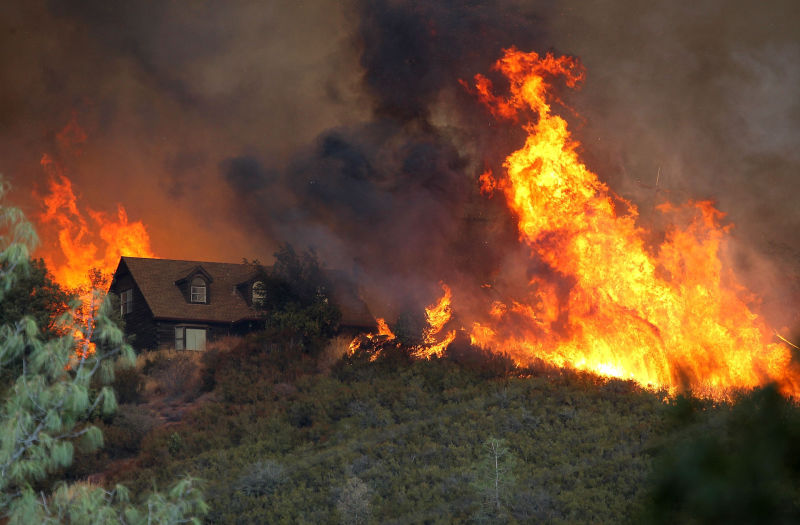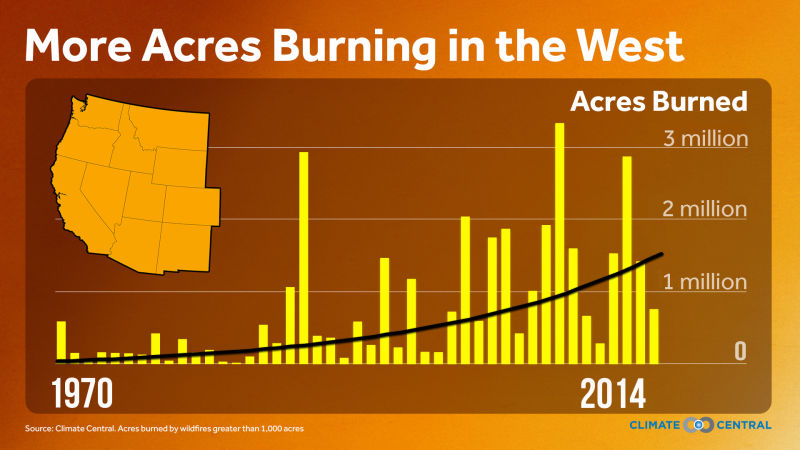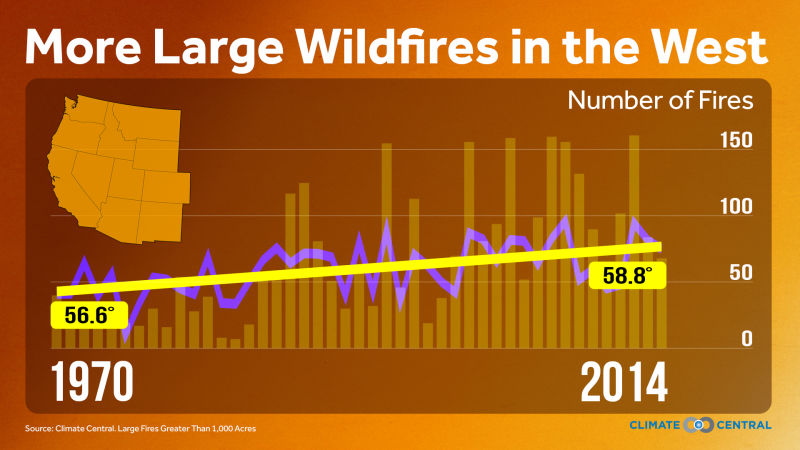The West continues to be an inferno at the start of September. Wildfires have exploded across the region in recent weeks.
There have been at least 117 large wildfires to date including 70 that are still burning. Those fires along with thousands of smaller blazes have contributed to 7.8 million acres burned in the U.S., a record for this time of year.
Washington has officially had its most destructive wildfire season on record, including its largest wildfire in state history. In Alaska, 5.1 million acres have burned. Even if all the fires went out across the West tomorrow, this year would still rank as the seventh-most destructive wildfire season in terms of acres burned. But with the season set to continue for at least another month, 2015 will continue to climb the charts, though whether it displaces 2006 for the record remains to be seen.
That puts it right in line with trends since the 1970s of more large fires and more acres burned by these large wildfires as the West dries out and heats up according to an updated Climate Central analysis. Climate change is one of the key drivers helping set up these dry and hot conditions favorable for wildfires.


